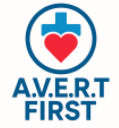AVERT HARM: The Umbrella of Harm Reduction and it’s Era of Evolution
The Power in Avert Harm’s Framework:” We train and provide our services so others, across a multi disciplinary spectrum of care, could know the true power in our framework, lies within the hands of those who are committed to making a change in others, in the world, from individuals like you.
,
See Why We Exist:
Integrating AVERT HARM Framework into Community Harm Reduction Strategy
The AVERT HARM Framework represents a transformative evolution in harm reduction—one that expands beyond crisis response to offer a proactive, systemic approach to identifying and mitigating harm across diverse domains. Unlike traditional models that focus narrowly on substance use, AVERT HARM equips individuals and institutions to recognize harm in its many forms: mental health, chronic illness, youth development, elder care, digital environments, and more.
At the heart of this framework is the H.A.R.M.™ Typology:
- Hidden Harm – Often historical or unspoken, yet deeply impactful.
- Acute Harm – Immediate threats requiring urgent response.
- Relational Harm – Patterns of repeated harm within relationships or systems.
- Missed Harm – Signals overlooked or minimized by individuals or institutions.
This typology provides a shared language for understanding harm, enabling earlier intervention and more effective support. Combined with AVERT’s three-track model—Community & Frontline, Clinical, and Public Health & Systems Leadership—the framework offers scalable tools for everyone from peer workers to policymakers.
Integrating AVERT HARM into local harm reduction efforts would allow us to:
- Train frontline responders and community leaders in proactive harm recognition.
- Map patterns of harm across our region to identify gaps and missed opportunities.
- Expand harm reduction beyond substance use to include mental health, digital safety, and social determinants.
- Build a culture of vigilance, compassion, and systemic accountability.
AVERT HARM is more than a framework—it’s a game changer. It redefines harm reduction as a universal, inclusive, and strategic practice. By adopting it, we can move from reacting to harm toward preventing it, and from isolated interventions to coordinated community resilience.




